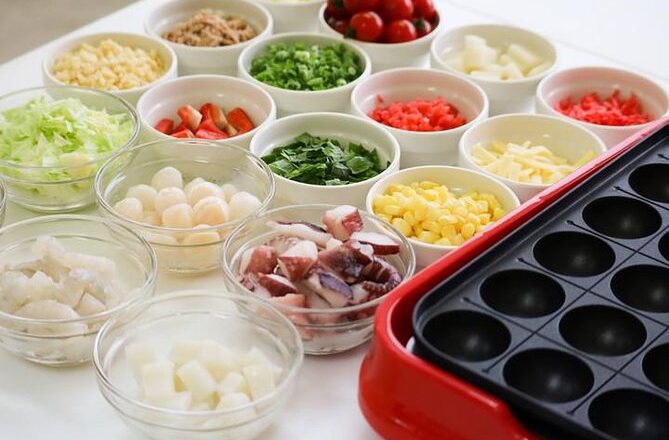Takoyaki, the beloved Japanese street food made of octopus-filled savory fried balls, delights taste buds worldwide. This iconic dish is not only popular in Japan, but it has also captured the hearts of many international food lovers. For those eager to replicate this delicious treat at home, mastering the technique is essential. In this guide, we delve into expert tips for cooking perfect takoyaki every time, ensuring your homemade creations rival the best street vendors.
Imagine a crispy, golden exterior giving way to a soft, flavorful interior bursting with tender pieces of octopus. With the right guidance, you can achieve this balance every time you make takoyaki. Whether you are new to Japanese cooking or a seasoned chef, these expertly curated tips will enhance your culinary skills and offer a satisfying cooking experience.

What is Takoyaki and Why is it Loved?
Takoyaki translates to grilled octopus in Japanese. Traditionally cooked in a special molded pan, this dish is a staple at Japanese festivals and street markets. But what makes it truly special? Takoyaki’s unique texture and savory fillings create an irresistible taste combination. The interplay of chewy octopus, steamy pancake-like batter, tangy sauce, and a sprinkle of dried bonito flakes make it a crowd favorite.
Choosing the Right Ingredients
Essential Ingredients for Takoyaki
Quality ingredients lay the foundation for any great dish. The main components of takoyaki are simple yet specific:
- Octopus: Fresh or frozen, diced into small, bite-sized pieces.
- Tenkasu (Tempura scraps): Adds crunchiness.
- Pickled Ginger: Offers a tangy contrast.
- Takoyaki Sauce: Resembles Worcestershire sauce but sweeter.
- Kewpie Mayo: A Japanese-style mayonnaise.
- Bonito Flakes: Adds umami richness.
When selecting octopus, fresh is always better, but frozen can be more accessible. Ensure it’s clean and adequately diced for even cooking.
Secret Ingredients to Elevate Your Takoyaki
In addition to traditional ingredients, consider adding green onions, or even cheese for a modern twist. Experimenting with fillings boosts the flavor profile and brings delight to each bite.
Investing in the Right Equipment
The Importance of a Takoyaki Pan
A specialized pan is crucial for authentic takoyaki. Choose a non-stick cast iron to achieve uniform heat distribution. This type of pan ensures that the exterior cooks evenly, forming the desired round shape.
If you’re serious about improving your cooking methods, consider exploring our section on comparing grill materials in stainless steel vs cast iron.
Tools to Perfect Your Takoyaki
While the pan is essential, having the right tools like skewers or chopsticks helps in flipping the balls to perfection. A good pouring container for batter makes the process more efficient.
Preparing the Takoyaki Batter
Recipe for a Perfect Batter
The batter is the heart of takoyaki. Use plain flour, dashi (Japanese stock), and adding a bit of soy sauce makes it flavorful.
Mixing Techniques for Better Consistency
Stir the ingredients until smooth to ensure there are no lumps. A whisk aids in achieving the right consistency.
Cooking Takoyaki: Step-by-Step Process
First Steps in Making Takoyaki
Begin by thoroughly greasing your takoyaki pan. Preheat over medium heat, ensuring its evenly heated.
Filling and Cooking the Batter
Pour the batter up to the brim of each mold, then add octopus, tenkasu, and pickled ginger. As it cooks, the edges will become firm.
How to Flip Takoyaki Balls
Using skewers or chopsticks, gently flip the balls a quarter turn. This practice pushes uncooked batter out, allowing it to form its spherical shape.
Perfecting the Art of Flipping Takoyaki
Flipping requires skill. Do it quickly and confidently as the batter sets, adjusting heat to prevent burning. Mastering this step is key to forming perfect spheres.
Serving and Tasting Takoyaki
Traditional Ways of Serving Takoyaki
Once cooked, takoyaki is best served hot. Drizzle with takoyaki sauce and Kewpie mayo, followed by a sprinkle of bonito flakes.
Modern Twists to Try
Innovative versions include adding toppings like green onions, seaweed, or even melting cheese on top for extra creaminess.
Troubleshooting Common Issues
If your takoyaki is sticking, check if the pan was sufficiently greased. Ensure each mold is filled correctly for the batter to set without burning.
Frequently Asked Questions About Takoyaki
Are there vegetarian alternatives to takoyaki?
Yes, you can substitute the octopus with mushrooms or tofu for a vegetarian option.
Can I make takoyaki without a specialized pan?
While its challenging, you can use an ebelskiver pan, though it might not yield the same results. Check out this guide on making aebleskiver for pan alternatives.
What other dishes complement takoyaki?
Pair takoyaki with other Japanese favorites like yakisoba or sushi for a complete meal. Read more about enhancing meals with diverse cooking techniques at this convenient grilling guide.

Conclusion
Creating perfect takoyaki at home is an achievable endeavor with the right tips and techniques. By choosing quality ingredients, using the proper equipment, and applying expert strategies, you can bring the vibrant tastes and textures of Japan to your kitchen. Each attempt will not only sharpen your skills but also promise a enjoyable dining experience.
This article contains affiliate links. We may earn a commission at no extra cost to you.

